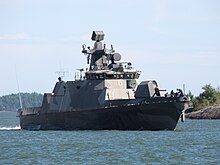
The Finnish Navy is one of the branches of the Finnish Defence Forces. The navy employs 2,300 people and about 4,300 conscripts are trained each year. Finnish Navy vessels are given the ship prefix "FNS", short for "Finnish Navy ship", but this is not used in Finnish-language contexts. The Finnish Navy also includes coastal forces and coastal artillery.

Skjold-class corvettes are a class of six light, superfast, stealth missile corvettes in service with the Royal Norwegian Navy. The boats were formerly classed as MTBs but, from 2009, the Royal Norwegian Navy has described them as corvettes (korvett) because their seaworthiness is seen as comparable to corvettes, and because they do not carry torpedoes. They were built at the Umoe Mandal yard. With a maximum speed of 55 knots (102 km/h), the Skjold-class corvettes were the fastest combat ships afloat at the time of their introduction., as of 2023 beaten by the Abu Dhabi MAR WP-18 Interceptor.

The Croatian Navy is a branch of the Croatian Armed Forces. It was formed in 1991 from what Croatian forces managed to capture from the Yugoslav Navy during the breakup of Yugoslavia and Croatian War of Independence. In addition to mobile coastal missile launchers, today it operates 30 vessels, divided into the Navy Flotilla for traditional naval duties, and the Croatian Coast Guard. Five missile boats form the Croatian fleet's main offensive capability.

A missile boat or missile cutter is a small, fast warship armed with anti-ship missiles. Being smaller than other warships such as destroyers and frigates, missile boats are popular with nations interested in forming a navy at lower cost. They are similar in concept to the torpedo boats of World War II; in fact, the first missile boats were modified torpedo boats with the torpedo tubes replaced by missile tubes.
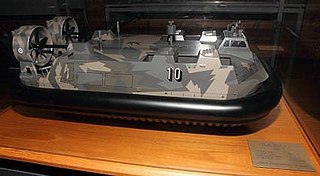
Tuuli was a hovercraft built for the Finnish Navy. Originally intended to be the lead vessel of a class of four combat hovercraft, she was never officially commissioned and after having been laid up for the most of her career, she was broken up in 2013.
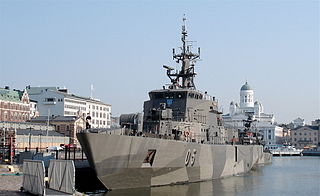
The Hämeenmaa-class minelayers is a two-vessel strong class of coastal minelayers, used by the Finnish Navy.

The Rauma-class missile boats are a class of missile boat in use by the Finnish Navy.

Helsinki-class missile boat is a class of four fast attack craft built for the Finnish Navy. All the ships were constructed at the Wärtsilä Helsinki Shipyard, Finland, and had Pansio as their homeport.
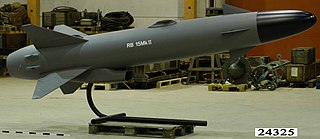
The RBS 15 is a long-range fire-and-forget surface-to-surface and air-to-surface anti-ship missile. The later version Mk. IV has the ability to attack land targets as well. The missile was developed by the Swedish company Saab Bofors Dynamics.

The Finnish maritime cluster is a cluster of Finnish companies in maritime industries. In 2016 the total turnover was estimated at 13 billion euros and it employed 48,000 people.

Archipelago Sea Naval Command was a Finnish Navy unit headquartered in Pansio, Turku. Its main operating area was the Archipelago Sea. Archipelago Sea Naval Command was formed in 1998 by combining the Archipelago Sea Fleet and Turku Coastal Regiment. The command was wound down at the end of 2014 and its constituent units were moved to a new command, the Coastal Fleet, which contains all vessels of the Navy.

The Type 22 missile boat is a ship class in the Chinese People's Liberation Army Navy. The first boat was launched in April 2004 by the Hudong-Zhonghua Shipyard at Shanghai. The boats incorporate stealth features and are based on Australian-designed wave-piercing catamaran hulls that are more stable than other fast missile craft in high sea conditions. 82 of these missile boats are currently in service with three flotillas having been produced over a span of seven years, operating in squadrons of eight vessels each.

The Tuima-class missile boat was a class of fast attack craft used as missile boats by the Finnish Navy.

The Kiisla class was a Finnish class of two patrol boats later converted to anti-submarine warfare vessels. The ships were built in 1984 and 1988 at the Hollming shipyard in Rauma, Finland for the Finnish Coast Guard. They were transferred to the Finnish Navy in 2004.

Gulf of Finland Naval Command was a Finnish Navy unit headquartered in Upinniemi, Kirkkonummi.
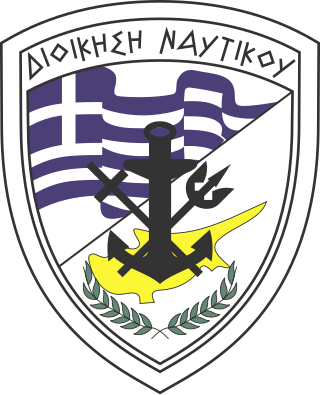
The Cyprus Naval Command is the armed sea wing of the Cyprus National Guard. The Cypriot Navy has the primary mission of defending the maritime borders of the Republic of Cyprus, but is currently unable to access the waters around Northern Cyprus, which have been controlled by the Turkish Navy since the 1974 Turkish invasion of Cyprus. This force does not possess any capital ships or other major warships, but is equipped with patrol boats, landing craft, surface-to-surface missile systems and integrated radar systems, as well as SEALs-type naval underwater demolitions units.

Turva is a Finnish offshore patrol vessel. Built in 2014 by STX Finland Rauma shipyard for the Finnish Border Guard, she is the largest vessel of the fleet as well as the first patrol vessel in Finland powered by liquefied natural gas (LNG).
Rauma shipyard is a shipyard in Rauma, Finland. It was previously operated by STX Finland which is owned by the South Korean STX Corporation. Rauma shipyard is specialized in large ferries, small cruise ships, multipurpose icebreakers and small naval craft.
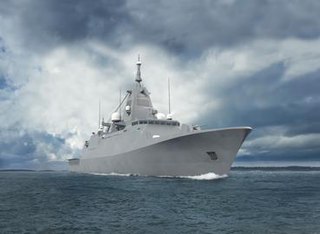
The Pohjanmaa class is a series of four multi-role corvettes currently under construction for the Finnish Navy as part of the Squadron 2020 project. Together with the existing four Hamina-class missile boats, the four new surface combatants will form the backbone of the Finnish Navy from the mid-2020s onwards. They will replace seven older vessels that have been or are due to be decommissioned; the minelayer Pohjanmaa, two Hämeenmaa-class minelayers and four Rauma-class missile boats.

Pyhäranta is a Finnish Pansio-class minelayer that was commissioned in 1992. The ship underwent an extensive mid-life refit in 2017, but ran aground and damaged its hull during an exercise in August 2022. At that time, it was based at Upinniemi and was a part of the 7th Surface Warfare Squadron of the Finnish Coastal Fleet along with the other minelayers Hämeenmaa and Porkkala, as well as several Hamina-class fast attack craft.




